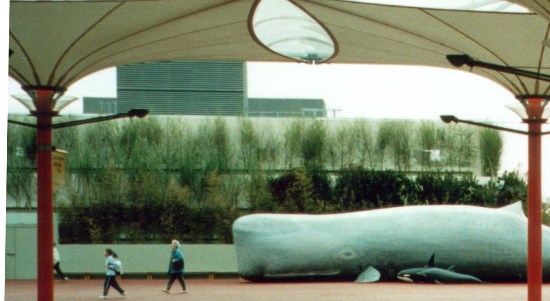Green walls
[edit] Introduction
The government’s 25 Year Environment Plan drives forward the agenda of a ‘cleaner and greener’ Britain. The plan lays out the government’s intention to enforce mandatory requirements on developers to integrate green infrastructure in the built environment. It seeks to integrate more stringent green considerations into building planning, and successfully captures the shift in sustainability goals by embedding an ‘environmental net gain’ principle.
The challenge faced in increasingly dense cities such as London however, is the scarcity of open areas for the development of green space. The solution is to be innovative with the space we do have. Integrating green infrastructure in dense, inner-city space is possible by seeking opportunities on buildings’ facades, transforming the dull, urban grey into green walls.

|
[edit] Green walls
More than just attractive architectural statements of environmental consciousness, green walls have a role to play in improving our cities as the rate and intensity of urbanisation accelerates.
Green walls provide large surface areas for pollutant deposition and can result in local reduction in concentrations of particulate matter between 10-20%. Within street canyons, this can increase to a reduction of particulate matter by 60% and nitrogen dioxide by 40%.
In addition to air quality, green walls are a key component of a city’s functional network of green spaces. Not only do they provide new habitats, but they also facilitate movement between habitats by contributing to networks of green corridors across vast urban space.
The benefits of green walls are not limited to the environmental but also span across the social reaches of sustainability. Green walls present an opportunity to use limited space to improve the quality of life for people in urban areas. The positive links made between the natural environment and an individual’s sense of wellbeing, stress reduction and mental regeneration are amongst the well-established restorative benefits of contact with nature. Studies also show that green facades can absorb sound energy that would normally be reflected by concrete, glass and steel and can reduce sound levels from traffic by 15dB. This minimises the excessive noise that threatens the wellbeing of urban residents.
Green walls provide a healthy and functional way for cities to become more attractive, resilient and increase the quality of living for residents, whilst competing with issues of diminishing space in inner-urban environments.
At the East Wick and Sweetwater project, the project team sought to improve residents’ quality of life and the local environmental conditions within the Queen Elizabeth Olympic Park by designing in green walls on the facades of the new developments.
The green roofs on the St James’ Market project form part of The Crown Estates “Wild West End” strategy to connect St James’s Park in the south to Regents Park in the north via a building-integrated green corridor.
[edit] Related articles on Designing Buildings Wiki
Featured articles and news
Homes England creates largest housing-led site in the North
Successful, 34 hectare land acquisition with the residential allocation now completed.
Scottish apprenticeship training proposals
General support although better accountability and transparency is sought.
The history of building regulations
A story of belated action in response to crisis.
Moisture, fire safety and emerging trends in living walls
How wet is your wall?
Current policy explained and newly published consultation by the UK and Welsh Governments.
British architecture 1919–39. Book review.
Conservation of listed prefabs in Moseley.
Energy industry calls for urgent reform.
Heritage staff wellbeing at work survey.
A five minute introduction.
50th Golden anniversary ECA Edmundson apprentice award
Showcasing the very best electrotechnical and engineering services for half a century.
Welsh government consults on HRBs and reg changes
Seeking feedback on a new regulatory regime and a broad range of issues.
CIOB Client Guide (2nd edition) March 2025
Free download covering statutory dutyholder roles under the Building Safety Act and much more.
Minister quizzed, as responsibility transfers to MHCLG and BSR publishes new building control guidance.
UK environmental regulations reform 2025
Amid wider new approaches to ensure regulators and regulation support growth.
BSRIA Statutory Compliance Inspection Checklist
BG80/2025 now significantly updated to include requirements related to important changes in legislation.























